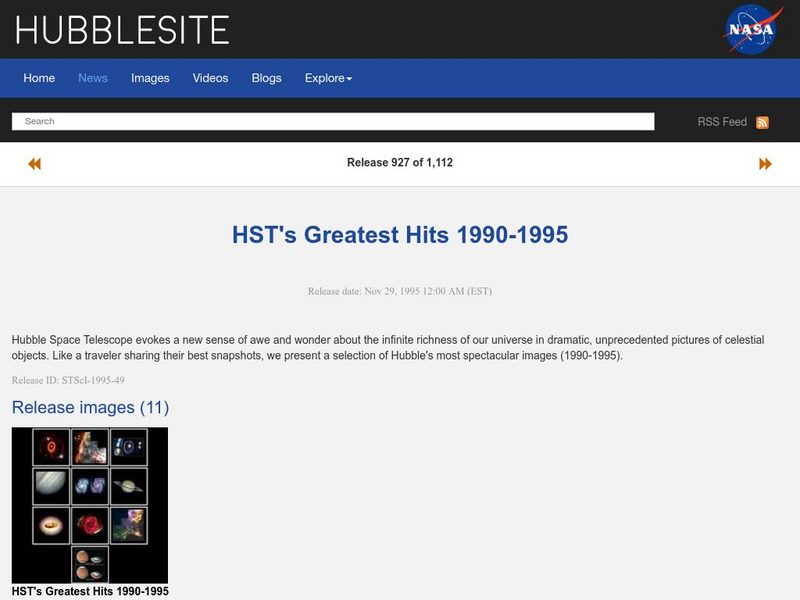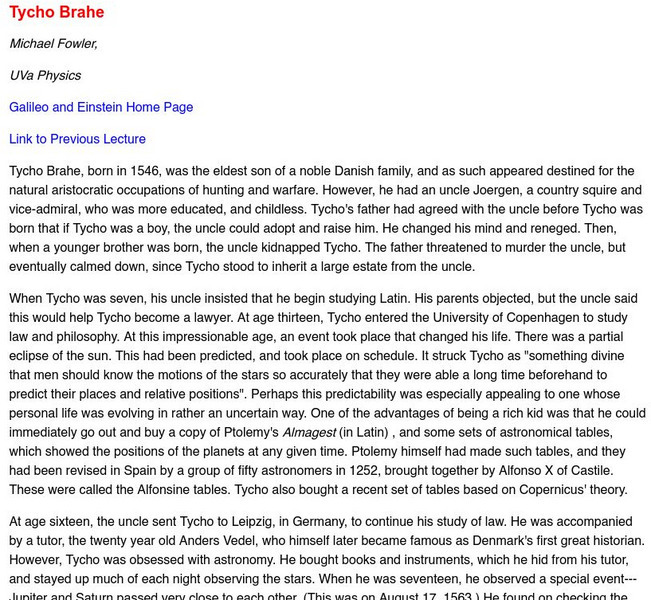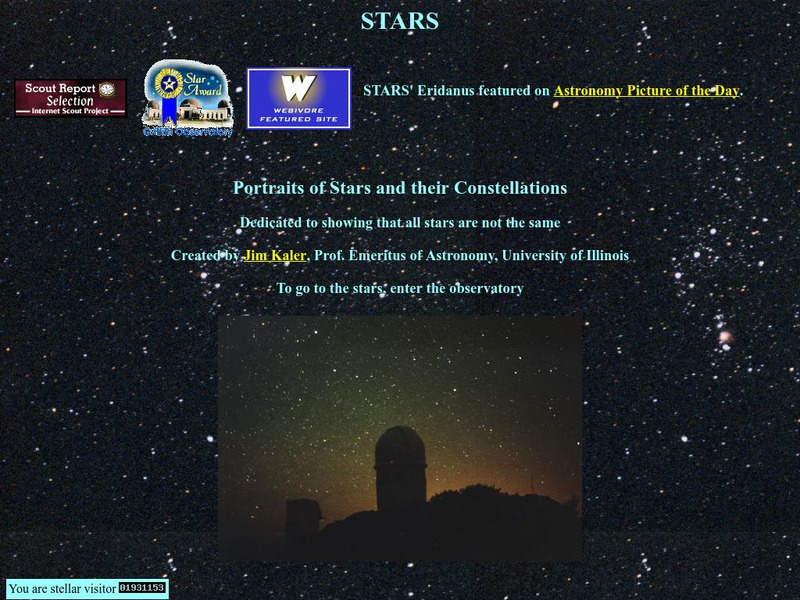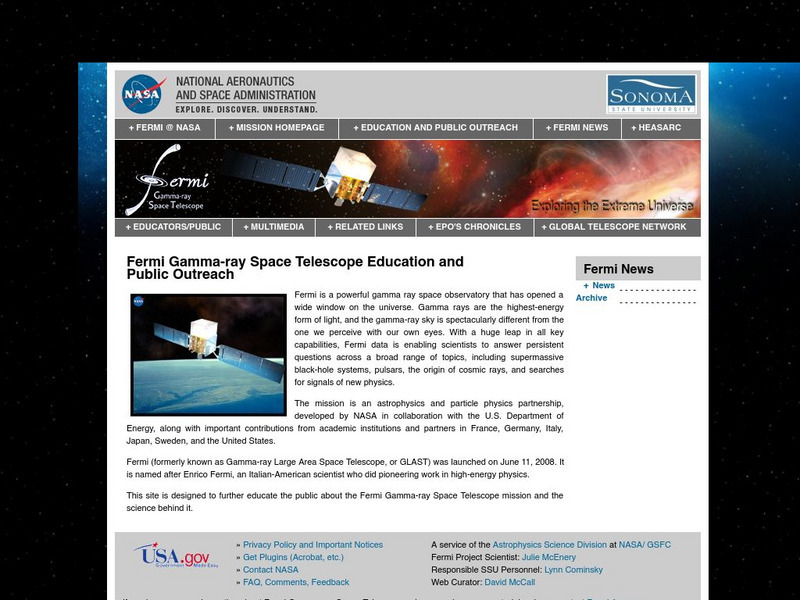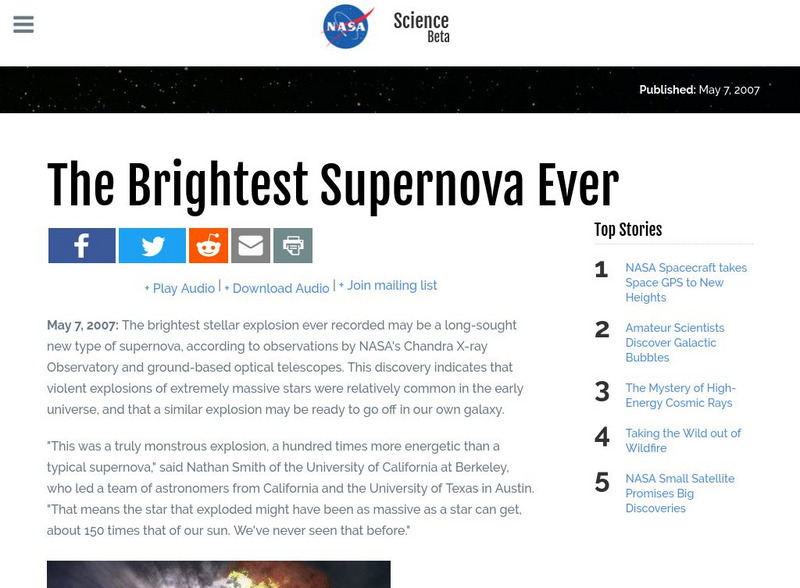Space Telescope Science Institute
Hubble Space Photographs: Hst's Greatest Hits 1990 1995
Breathtaking images from the Hubble Space Telescope give a new perspective to our world.
PBS
Pbs Teachers:monster of the Milky Way: Birth of a Black Hole
Discover how a dying star can be reborn as a black hole. View a slide show that follows the progression of events from an old, dying star to newborn black hole.
PBS
Pbs Learning Media: Birth of a Supernova, Type Ii
In this interactive activity from NOVA Online, learn about a type of exploding star a Type II supernova that is so large it has a mass 10 times greater than the mass of our Sun.
PBS
Pbs Learning Media: Pulsars: Little Green Men
The story behind Jocelyn Bell's role in the discovery of pulsars is told in this colorful, comic-book-style resource from A Science Odyssey Web site.
PBS
Pbs Learning Media: How Big Is the Universe?
In this media-rich essay from the NOVA Web site, astronomer Brent Tully of the University of Hawaii walks you through the latest scientific theories about the size of the universe.
European Space Agency
European Space Agency: Esa Kids: Our Universe: Supernovas
A basic overview of supernovas. Links to more information about starts, planets and other objects in our solar system and galaxy are included.
NASA
Heasarc: Supernova
Describes the most energetic explosive event in outer space: the supernova. Includes animation of a supernova.
University of Virginia
Tycho Brahe U Va Physics
This site contains information about Tycho Brahe's life as well as his accomplishments.
University of Illinois
University of Illinois: Stars and Constellations
A large collection of information about and photos of the starts and constellations in the sky.
California Institute of Technology
Spitzer Science Center: Where Galactic Snakes Live
Following the title, "Where Galactic Snakes Live" this site examines an image of "Galactic Snakes" which are actually clouds larger than several solar systems. The text below the image proceeds to explain certain stellar features...
Ministerio de Educación (Spain)
Ministerio De Educacion: Medio Interestelar Modulo Vi Unidad 1
In this module you will learn about the interstellar extinction and study about the different types of nebulae and supernova.
Wikimedia
Wikipedia: Tycho Brahe
A great overview of the life of astronomer Tycho Brahe from Wikipedia Encyclopedia. This article discusses his contributions to the world of astronomy, and his building of his observatory called Uraniborg.
TED Talks
Ted: Ted Ed: How to Detect a Supernova
Just now, somewhere in the universe, a star exploded. In fact, a supernova occurs every second or so in the observable universe. Yet, we've never actually been able to watch a supernova in its first violent moments. Is early detection...
Sonoma State University
The Gamma Ray Large Area Space Telescope (Glast)
Background information on gamma rays and the sources of gamma rays in the universe. Discusses the purpose of the GLAST space mission and the types of findings which they wish to make. A link to the GLAST movie provides an excellent...
Other
Saudi Aramco World: The Scholar's Supernova
Article explores the sightings of the supernova of 1006 that were recorded from Europe to Japan.
CK-12 Foundation
Ck 12: Earth Science: Supergiants and Supernovas
[Free Registration/Login may be required to access all resource tools.] Explain the importance of supernovas and how a star becomes a supergiant.
Space Telescope Science Institute
Nasa: Hubble Space Telescope: Stars
At this site from the HubbleSite you can learn all about a star's life, birth, and death. Site contains links to a star movie as well as space/time location.
NASA
Nasa Science: The Brightest Supernova Ever Seen
Article explores the supernova of a star that is possibly "150 times more massive than our Sun." The primary observations of the explosion were accomplished through the Chandra X-ray Observatory. (May 7, 2007)
NASA
Nasa: Imagine the Universe: The History of Gamma Ray Astronomy
This NASA article discusses the history of gamma-ray astronomy. Related resources.
CK-12 Foundation
Ck 12: Earth Science: Life Cycles of Stars
[Free Registration/Login may be required to access all resource tools.] Examines the formation of a star and the main sequence of the star's life cycle.
PBS
Pbs: Nova Online: Birth of a Supernova
PBS site explores the birth of a Supernova and explores its common types.
NASA
Nasa: Wmap: Fate of the Universe
A general look at the expansion of the universe and the Big Bang theory.
NASA
Nasa: Imagine the Universe: Gamma Rays From Supernovae and Supernova Remnants
Astronomers use gamma decay to study the lives of the stars.
BBC
Bbc: Gcse Bitesize: The Life Cycle of a Star
This lesson focuses on the formation and life cycle of stars. Stars form when enough dust and gas clump together because of gravitational forces. Nuclear reactions release energy to keep the star hot. Some stars grow larger over time....


